













“The Creole Sausage Queen” has a
Despite its crucial role in maintaining our health, dentistry remains one of the least diverse professions in the country.
Young’s
Cleaning’s
Natalie Barranco, co-founder of Prime Business Advisory Solutions


Architecture
Studio
Louisiana’s THC drink industry escaped a ban, but some of its biggest players say the new regulations hamper local businesses in a $1billion-plus global industry that’s just getting started. 30
David and Teresa Lawrence have spent decades in staffing and HR. They share their thoughts on the biggest mistakes businesses make in hiring and more.


Thinking about November, my first thought is that this is going to be quite the month for our country. I’m hoping we see record voter turnout, as there is definitely a lot at stake with this election.
The second thing that pops into my mind is the New Orleans 500. For the fourth year, Biz New Orleans will be publishing a collection of profiles (including some fun, “getting to know you” responses) from approximately 500 area professionals. Each year, we look to highlight the most inspiring, involved and influential in our region by creating a literal “who’s who” for every industry. The 2025 edition will be out this month, and I encourage you to grab a copy on BizNewOrleans.com.
I’m also looking ahead to our next two issues. In December, we’ll once again run down the top 10 business stories of the year, followed by the big announcement of our CEO of the year and other executives of the year in January.
As always, I invite you to share your thoughts with the Biz team regarding our coverage year-round. Is there someone, or some topic you’d like to learn more about? Do you have an incredible new workplace that deserves to be featured? A creative business idea that’s been taking off? Do you have an idea for our weekly

BizTalks podcast? Please feel free to share your thoughts and suggestions by emailing Editorial@ BizNewOrleans.com. Our goal is to cover all the amazing industries that call Southeast Louisiana home, and we can’t do it without your help.
As we head into this time of family get-togethers — and with this being our family business issue — I hope you will join me in supporting family businesses this holiday season. From our incredible, family-run restaurants to the wide array of boutique shopping and entertainment options, this region has no shortage of unique, world-class, establishments, and when you choose to support them, you are supporting our whole community and making sure it remains like no other.
Happy Holidays and thanks for reading,

Editor Kimberley@BizNewOrleans.com
Publisher Todd Matherne
EDITORIAL
Editor Kimberley Singletary
Art Director Sarah E.G. Majeste
Digital Media Editor Kelly Massicot
Associate News Editor Veronika Lee Claghorn
Perspective Writer Drew Hawkins
Contributors Matt Hahne, Ashley McLellan, Coulter McMahen, Misty Milioto, Chris Price, Poppy Tooker, Keith Twitchell
ADVERTISING
Senior Account Executive Meghan Schmitt (504) 830-7246 Meghan@BizNewOrleans.com
Account Executive Abby Palopoli (504) 830-7208 Abby@BizNewOrleans.com
PRODUCTION
Digital Director Rosa Balaguer Arostegui
Production Designer Ashley Pemberton
Production Designer Czarlyn Ria Trinidad
MARKETING
Marketing Manager Greer Stewart
Sponsored Content Coordinator
Jeremy Marshall
Visual Media Producer Mallary Wolfe
CIRCULATION
Distribution John Holzer
ADMINISTRATION
Office Managers Emily Ruiz
VP of Sales and Marketing Kate Henry
Chief Executive Officer Todd Matherne
For subscriptions, call (504) 830-7231

*Must



This year, Thanksgiving is the latest date possible, November 28, which means as a small business you only have 27 shopping days this holiday season to make your year. With the shortest span possible for end-of-year shopping, it is so important for consumers to think local and shop local.
Small business Saturday is officially November 30, but it should be all season and year long. One group that was formed around shopping local is the independent business alliance founded in 2001, ShopLocal. This nonprofit organization educates consumers on the benefits of keeping their dollars in the local economy. If your business wants to become a member, visit them at staylocal.org to join. You can also visit their website to discover a new local business and do some shopping.
We have so many unique businesses in New Orleans, and one great location I tell people (especially out of towners) to visit is the shop at the Historic New Orleans Collection. Here you can find unique, one-of-a-kind New Orleans items while supporting a local treasure. If you have not visited the collection in a while, it is time for a fresh visit. It will inspire you and remind you why you Love New Orleans.
This month, Andrea and I celebrate our 35th wedding anniversary — and what a special year it has been. In calendar year 2024, all three of our daughters have blessed us with a grandbaby, bringing so much joy to our lives. Hopefully we will find time to step away together and celebrate, but I know us — we will somehow figure out a way to celebrate all together as a family, the way we love it and the way it makes us thankful and happy. Happy Thanksgiving.
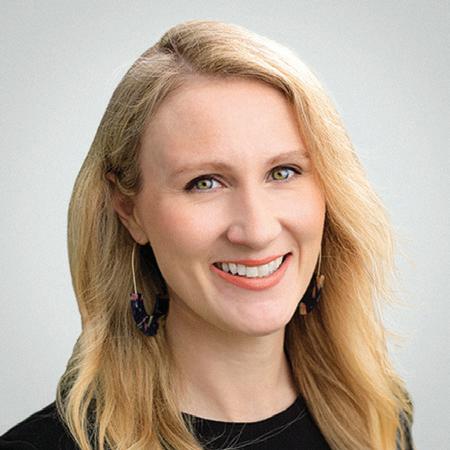
VP of Sales and Marketing (504) 830-7216 kate@bizneworleans.com

Senior Account Executive (504) 830-7246 meghan@bizneworleans.com

TODD MATHERNE CEO and Publisher Renaissance Publishing

Account Executive
(504) 830-7208
abby@bizneworleans.com





The restaurant’s new product line invites people to celebrate Commander’s Palacestyle no matter where they are.
Young entrepreneurs share some of the unique challenges they face and how they’re getting around them.
Without restraints, this rush of cash could dramatically alter “amateur” sports.
POPPY TOOKER has spent her life devoted to the cultural essence that food brings to Louisiana, a topic she explores weekly on her NPR-affiliated radio show, Louisiana Eats! From farmers markets to the homes and restaurants where our culinary traditions are revered and renewed, Poppy lends the voice of an insider to interested readers everywhere.
The restaurant’s new product line invites people to celebrate Commander’s Palace-style no matter where they are.
BY POPPY TOOKER
For years, locals have done their best at home recreating what co-proprietor Ti Martin calls Commander’s Palace’s “fanatical hospitality.”
“It’s that extra touch — the chilled glassware your friend pulls from the refrigerator when you arrive for a dinner party, showing they care enough to elevate their hosting for you.”
During the pandemic, the company’s partnership with Goldbelly’s food delivery service brought the Commander’s experience to homes around the country. Early this year, Commander’s expanded by opening a casual eatery, Le Petit Bleu, next door to the famed restaurant, which has further expanded the brand.
Inspired by the crêperies of Paris, co-proprietor Lally Brennan describes Le Petit Bleu as “a tiny jewel-box of a restaurant.” Along with dine-in and takeout food options, cocktails, cookbooks and Ella Brennan’s memoir line the shelves alongside whimsical merchandise bearing Tally’s likeness on socks and baseball caps.
“We were working on a bird logo when a customer asked if I was ‘Tally,’” Martin laughed. Unwittingly, the fan had conflated the two cousins’ (Ti and Lally’s) names, providing the perfect moniker for their mascot.
Proprietary cocktail mixes from El Guapo and French Truck’s special Commander’s blend coffee join “Cook It Like Commander’s” kitchen accessories ranging from a cherry-wood roux spoon to TILIT professional aprons.
“The industry agrees that TILIT produces the best chef’s aprons,” explained Martin. “It’s a bonus that Andrew McCrery and Jenny Goodman met while working as sous chefs in Commander’s kitchen before starting TILIT, their now-successful Manhattan-based business.”
This fall, Martin and Brennan introduced a fully expanded giftware line, dubbed the “Commander’s Collection.” Numbering more than 70 items, the collection ranges from the bar to the table and beyond.
“We’ve taken a deep dive on every item,” Martin said. “It has to fit us — with an air of eccentric, casual elegance joined by a New Orleans funky vibe.”
Commander’s classic banana leaf charger plates accompany a new dessert plate collection. European hand-blown champagne flutes are joined by wave coupe glassware and pewter-stemmed martinis. Cocktail shakers with strainers and stirring spoons round out the

barware selection. Bar towels bearing mascot Tally’s image and hand-embroidered linen cocktail napkins round out the collection.
“Each depicts one of our favorite sayings,” Martin revealed. On one napkin a pair of toasting ladies agree, “There’s no place like New Orleans.” Another depicts a turtle suspended by balloons flying aloft with the proclamation, “Nowhere to go and all day to get there.”
Fine chef’s knives add to the kitchen line while the pantry also receives some new delicious offerings. A full selection of seasonings straight from Commander’s kitchen is joined by spiced and candied pecans and salted Bananas Foster caramels. Along with perennial favorites gumbo and turtle soup, a new lemon ice box pie has been added to the company’s Creole cream cheesecake and pecan pie, all shipped from Goldbelly.
New Orleans artist Tim Trapolin has designed everything from Commander’s menu covers to book illustrations since being Ella Brennan tapped him decades ago while he was teaching art at the private girl’s school, Louise S. McGehee School.
“All I have to do is tell Tim a story and it instantly becomes a beautiful illustration,” Martin said. Now his colorful, riotous artwork adorns everything from Commander’s blueand-white striped umbrella interiors, French jacquard tea towels and a hand-rolled silk scarf, destined to become a sought-after ladies accessory.
“We discovered Commander’s means more to people than just a meal. It’s a celebratory thing, a feeling — just like New Orleans itself,” Martin said. “Not every city has that.”
Catch Poppy Tooker on her radio show, “Louisiana Eats!” Saturdays at 3 p.m. and Mondays at 8 p.m. on WWNO 89.9 FM.
Ti Martin, Lally Brennan and the entire team at Commander’s are hard at work conveying that elusive feeling to the world, and New Orleans lovers and Commander’s Palace fans everywhere are certain to vie for a share in the joyful exuberance. T


Without restraints, this rush of cash could dramatically alter “amateur” sports
BY CHRIS PRICE
From the expanded 12-team playoff, to the Name, Image and Likeness (NIL) policy, money is driving changes in college sports at a pace rarely, if ever, seen before.
For most of the existence of college athletics, student athletes could only be rewarded for their play with an athletic scholarship and little to no other compensation. For decades, coaches and boosters tried to find their way
around the laws against paying players enacted by college sports’ main governing body, the National Collegiate Athletic Association (NCAA).
Many times, $100 handshakes between players and boosters after games slipped by, but some programs who were too brazen in bending the rules — be it via money, cars, jobs or homes, etc., for players or their parents — got caught and reaped the consequences.
Things got much easier for coaches and boosters hoping to lure top athletes to their campuses in 2021, however, when the U.S. Supreme Court rejected the NCAA’s appeal of its antitrust lawsuit. That ruling cleared the way for college athletes to make money through endorsement deals and other personal business ventures, including jersey sales, use of their NIL in video games, commercial endorsements and more.
The only problem was the NCAA, athletic conferences and schools didn’t have a framework to govern the new reality and thus struggled with how to put some sort of guidance in place.
Combined with recently eased player transfer eligibility rules, schools’ collectives (organized boosters) have been able to essentially bid on the best college and high school prospects with the promise of a huge NIL deal.
Players are now cashing in and going to the schools that offer the biggest financial promise. But already, some recruits and schools and their collectives have seen deals go bust.
Former Florida recruit and current Georgia quarterback Jaden Rashada has a pending lawsuit against Florida coach Billy Napier and the program’s top booster over a failed NIL deal worth nearly $14 million.
This season even saw a player leave his team three games into the season after his NIL deal went belly up. Quarterback Matthew Sluka, who transferred from College of the Holy Cross to the University of Nevada at Las Vegas (UNLV), led the Running Rebels to a 3-0 start, but when the $100,000 he said he was promised in a verbal agreement didn’t clear his account, he

decided to step away from the team, declare a red-shirt season and transfer to another school with his remaining eligibility.
Both of these examples have the potential to sully reputations and the game. Some say the players are selfish and, in Sluka’s case, he abandoned his teammates. But it’s just as easy to say that the schools’ involved parties have been bad actors in these cases and may be in the future, too.
Make no mistake about it, schools are looking to cash in on their athletic programs. One can tell that simply by looking at the consolidation of major conferences and the expansion of postseason opportunities — most noticeably in football.
In just the last few years, the potential for expanding the financial pie has caused athletic conferences to grow, sometimes in illogical directions. For most of our lifetimes, schools belonged to regional-based conferences. Not all of them can say that anymore. The Big 10, traditionally made up of schools from the Midwest, now includes two Los Angeles-based schools — USC and UCLA. The Atlantic Coast Conference, long made up of schools in states along the Eastern seaboard, now includes California and Stanford. Strange bedfellows indeed. But this “growth” was driven by the member schools’ desire to remain among the upper echelon of highest-earning programs, and they’re making bank through expanded television and marketing deals.
While personally I’m happy that players now have an avenue to be paid, I think the NCAA, conference and school leadership need to establish some governance to provide an equitable solution. As it is, “rich” schools can offer more attractive financial incentives than others, which, if left unbridled, will lead to disparities in fairness, recruitment and competition.
The question now is whether those currently in place can flesh out a mutually beneficial way forward for athletic programs and student athletes. T



Young entrepreneurs share some of the unique challenges they face and how they’re getting around them.
BY KEITH TWITCHELL
The average age of a first-time entrepreneur is a little under 40. It’s a time when most people have started a career in a specific field, gained expertise and insight, identified a need, and seized the opportunity inherent in meeting that need.
There are exceptions to every rule, however, and the New Orleans area is home to a significant number of younger entrepreneurs. But while getting a head start is a good idea in most circumstances, younger people starting businesses face some unique challenges — and are setting some interesting trends in solving those challenges.
KEITH TWITCHELL spent 16 years running his own business before serving as president of the Committee for a Better New Orleans from 2004 through 2020. He has observed, supported and participated in entrepreneurial ventures at the street, neighborhood, nonprofit, micro- and macro-business levels.
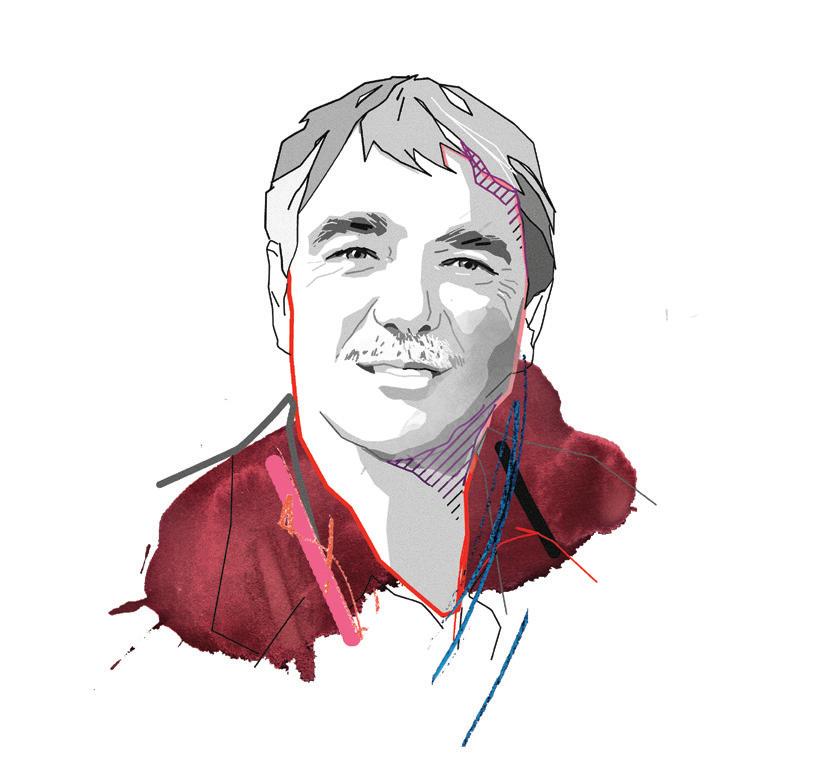
“One of the biggest challenges as a young entrepreneur is not having established a network to help guide you — not having the infrastructure around to teach you how to handle the business side of things,” said Patrick Hernandez, co-founder at age 26 of Roulaison Distilling Company, makers of Roulaison Run, a certified Louisiana product that has been rated as one of the best craft rums in the nation.
Hernandez took an entrepreneurial approach to addressing this problem by helping to launch the Louisiana Distillers Guild, which has since provided him with the opportunity to learn from colleagues in the business. He also cited the strong startup support system in New Orleans, as well as professional organizations that business owners can join, as key networkbuilding opportunities.
“My approach is to join all the groups, like the Chamber and the Young Leadership Council,” concurred Samantha Bongiovanni, who started Pixie Dust Biodegradable Glitter at age 27, “and go to all the business events. I’ve made so many connections at those events.”
Yet Bongiovanni pointed out another hurdle that comes with not having access to a larger network: maintaining her business-to-business relationships.
“I deal a lot with the challenge of changing contacts at my clients,” she reported. “At this stage, it’s really a person-to-person relationship.”
Without that broader contact base, Bongiovanni finds that she has to establish her credibility as a business owner each time there is turnover with her contacts — not to mention having, once again, to educate the new person about why biodegradable glitter is preferable to the traditional microplastic variety.
Since she is selling a new product — biodegradable glitteris made primarily from eucalyptus leaves and has only existed since 2019 — marketing for her is as much education as anything else, and that has modified her
approach to sales. Bongiovanni has found that stores that carry environmentally friendly products in general are more receptive than mainstream costume and Mardi Gras stores, so these types of outlets have become a key marketing target. She also puts as much emphasis on providing glitter at social events as selling to stores.
This flexibility is a hallmark of younger entrepreneurs, according to Allison Hotard, executive director of the Young Leadership Council (YLC).
“They have to be so multifaceted,” she observed. “They have to have a social media presence. They have to run their businesses. They have to sell their products. And the cost of everything is so high that they can’t really afford to hire someone to do any of this.”
Indeed, having a smaller financial resource base is a challenge common to many young entrepreneurs; Hotard noted that many individuals run their businesses from their homes, and/ or take advantage of co-working spaces in order to keep costs down.
Hernandez pointed out another way that many of his peers deal with the various challenges they face.
“Young entrepreneurs are really embracing that they don’t have to do things the way the people who came before them did,” he said. “We’re not just taking things at face value.”
As an example, he cited marketing.
“We’re not trying to present a perfect image,” he said. “We’re showing a little more of what’s going on behind the scenes. We make a consistent product, but we have really embraced the craft approach, so there will be nuances.”
Bongiovanni, whose product line also includes sustainable Mardi Gras throws, pointed out one other trend that helps sustain her generation of business owners.
“Young entrepreneurs have each other as a support system,” she said, “and we do business with each other.” T


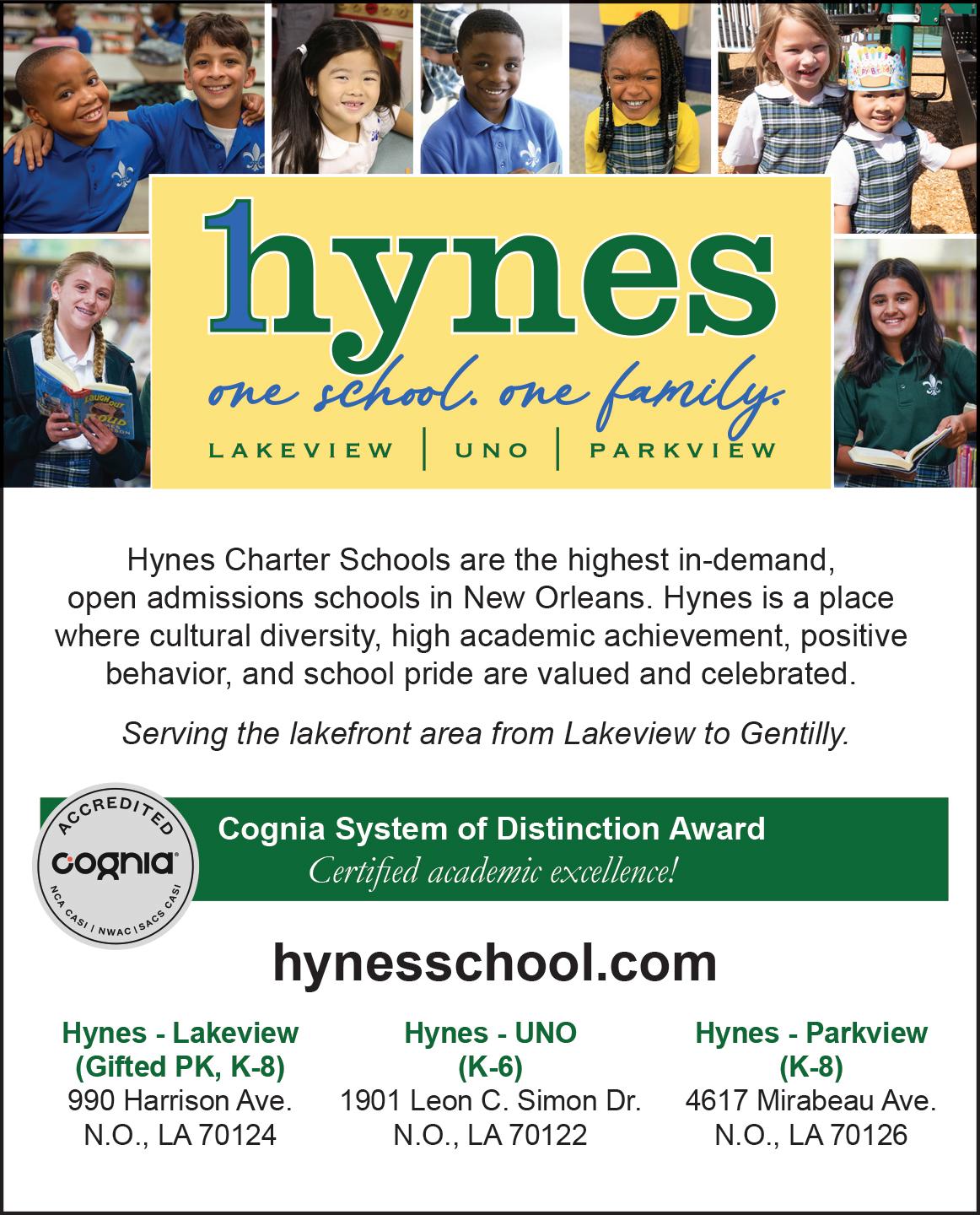



20 MARITIME+PORTS
For generations, familyowned businesses have been at the heart of the maritime industry, building legacies that span decades. 24 BANKING+FINANCE
Despite its crucial role in maintaining our health, dentistry remains one of the least diverse professions in the country.
PERSPECTIVES
MARITIME+PORTS
For generations, familyowned businesses have been at the heart of the maritime industry, building legacies that span decades.
BY DREW HAWKINS
New Orleans has long been a vital gateway for global trade, connecting the U.S. to markets around the world. While mega-companies use local ports to ship their goods, smaller, often family-run local companies also play a key role in global trade. These companies not only embody the resilience and adaptability necessary to survive in an everchanging global market but also maintain a sense of tradition and community that sets them apart from their larger, corporate competitors. And in their successes lie lessons on how to thrive in the competitive world of global trade.
One such company is Argo Fine Imports (AFI). Founded in 1979 by Don MacMaster, AFI began as a small operation supplying fine imported wood products to distributors and original
DREW HAWKINS is a writer and journalist in New Orleans. He’s the health equity reporter in the Gulf States Newsroom, a collaboration among public radio stations in Louisiana (WWNO and WRKF), Alabama (WBHM) and Mississippi (MPB-Mississippi Public Broadcasting) and NPR. He’s also the producer and host of Micro, a LitHub podcast for short but powerful writing.
equipment manufacturers. Today, under the leadership of the second generation—Robert, Kenny and Ryan MacMaster—the company has expanded its reach significantly.
“Don is still a pivotal part of our operations today,” said Robert MacMaster, vice president of Argo Fine Imports, reflecting on the role his father continues to play in the business. “We’ve grown to four offices, with three international branches, directly employing over 15,000 people across all our plywood mill operations.”
One of the key elements in Argo’s evolution has been its ability to adapt to the rapid technological changes in the maritime industry.
“We continue to evolve on a yearly basis, as shipping and business environments are ever adapting,” Robert said.
Originally, Argo Fine Imports relied on break bulk shipments, which were standard for plywood cargo out of Southeast Asia. Since 2010, the company has transitioned to containerized cargo, drastically reducing water transit times and minimizing the risk of damage from shifting cargo or water intrusion.
“Switching to containerized shipping was a game-changer,” MacMaster said. “It forced us to make significant IT investments to handle the mounting paperwork and to get a real-time snapshot of our operations.” This technological upgrade has allowed the company to manage a complex logistics network that includes thousands of containers on the water at any given time, arriving from over 20 countries.
That’s not to say there haven’t been challenges. Like many businesses in the maritime industry, Argo Fine Imports has faced its share of obstacles as it battles to respond to changing global trade dynamics. Political instability, tariff changes and supply chain disruptions have all influenced the company’s strategies.
“The anti-import political environment has been an ever-changing supply environment,” MacMaster said. “We often re-evaluate and reconfigure our sourcing and supply chains to adapt to these changes.”
To stay competitive amid the rise of larger, corporate-owned maritime companies, Argo

relies on its core principles of adaptability and customer-centric solutions.
“Being a smaller, family-owned company allows us to quickly adapt to market changes and our customers’ needs,” MacMaster said. “We focus on tailored solutions for everyone from Fortune 500 companies to smaller cabinet manufacturers.”
Like a good cup of coffee, success is brewed with quality ingredients, patience, and care. That’s what’s worked for Westfeldt Brothers Inc. Founded in 1851 by Gustavus Adolphus George Westfeldt, the company’s history that dates to the earliest days of green coffee trading in the United States.
“It began with the emigration of my greatgreat-great-grandfather from Sweden to Mobile, Alabama,” said Shelby Westfeldt, a current coffee trader at the company. “In 1853, we moved to New Orleans, and by 1880, Westfeldt Brothers Inc. was recognized as one of the principal green coffee importers in the nation.”
The company has evolved significantly over the years, particularly with advancements in technology that have changed how business is conducted.
“One of my father’s first jobs was to walk down to the New Orleans Board of Trade twice a day to get the updated coffee prices,” Westfeldt said. “Now, we all have real-time screens, so business happens much quicker!”
“One advantage we have, being such an old and established company, is the relationships we’ve built, which make it much easier to handle challenges” like global trade disruptions.
In an industry increasingly dominated by large corporations, the company has maintained its competitive edge by staying true to its roots.
“Our customers always come first,” Westfeldt said. “We appreciate any business, large or small, and always try to convey that.” This customer-centric approach has allowed the company to retain its relevance and reputation in the competitive world of coffee trading.
Working with family members is also a core aspect of Westfeldt Brothers Inc.’s success.
“It’s very interesting!” Westfeldt said with a laugh. “I think it comes easier to us because we’ve all watched the generations before us do it and learned from their successes and mistakes. We definitely have a lot of fun working together.”
Local ports play a crucial role in the company’s operations, serving as a vital link in its supply chain.
“We have a strong relationship with the Port of New Orleans,” Westfeldt said. “We feel very lucky to have them as an ally and a resource, and we cherish the support they provide to trade companies in our community.”
Both Argo Fine Imports and Westfeldt Brothers Inc. underscore the importance of local ports in their success. They not only facilitate the efficient movement of goods but also support a thriving community of local businesses.
“Our ports and distribution network are key to our success,” MacMaster said. “We’re only as good as the people we work with, and each port location plays a pivotal role in a smooth, reliable transfer of goods.”
Westfeldt echoed this sentiment, highlighting the port’s historical significance and its continued relevance in today’s global economy. “There are so many imports that come into New Orleans, coffee being a big one,” she said. “There is so much history here, and we’re thrilled to be a part of it.”
As they look to the future, family-owned companies that have managed to thrive, like Argo Fine Imports and Westfeldt Brothers Inc. remain committed to their values while embracing innovation and sustainability. They stay current while focusing on resilience, flexibility and community.
“Our success is not just about the well-being of our families but also about the thousands of families in Southeast Asia and the manufacturing facilities we work with,” MacMaster said. “Staying true to our roots while embracing change is what drives us forward.”
For Westfeldt Brothers Inc., the legacy of coffee trading that began in the mid-19th century continues to thrive in a modern, fastpaced world.
“We have a lot of history, and we plan to keep building on it,” Westfeldt said with a smile. “Being a part of New Orleans’ maritime industry is not just a business for us; it’s our family’s legacy.”T

DID YOU KNOW? The percentage of white dentists in America has been declining, while the number of Asian dentists has grown. In 2005, white dentists made up 79.8% of the field. In 2020, that percentage had dropped to 70.2%. In the same time the percentage of Asian dentists rose from 11.8% to 18%.
Asmile is more than just an expression; it’s a universal language that conveys warmth, confidence and connection. Yet behind those smiles lies a profession struggling with representation.
Less than 4% of practicing dentists in the U.S. are Black, compared to about 13% of the population. This disparity creates significant barriers to care, especially in communities of color, where patients may feel more comfortable receiving treatment from professionals who understand their cultural backgrounds.

Despite its crucial role in maintaining our health, dentistry remains one of the least diverse professions in the country.
BY DREW HAWKINS
For Dr. Brandon Mack, the journey into dentistry began with inspiration from pioneers in the field. In New Orleans, he was introduced to the profession by Dr. Tracy Crear, a trailblazer among Black dentists in the area.
“Dr. Crear and (Dr.) Romell Madison were the first dentists I met, and they showed me the impact Black dentists could have on their communities,” Mack recalled. “They set the bar for excellence and entrepreneurship, inspiring young people like me to see the potential in this field.”
Mack now owns Eden Dental Aesthetics and said he’s dedicated to breaking barriers in a profession that has historically lacked diversity.
“When patients see dentists who look like them and understand their cultural backgrounds, it fosters a deeper level of trust and communication,” he emphasized. This trust is critical for effective healthcare, particularly in cities like New Orleans, where the Black community comprises 57% of the population.
Mentorship has played a pivotal role in Mack’s career, shaping his aspirations and commitment to diversity in the field. He credits much of his early inspiration to Dr. Melvin Dillard, an orthodontist in Chicago, who encouraged him to consider dentistry not just as a career but a way to make a meaningful difference.
“Dr. Dillard made me see the potential of this field. He was a guiding light,” Mack said.
This emphasis on mentorship is echoed in programs across New Orleans that guide aspiring Black dentists through their educational journeys.
Organizations like the Student National Dental Association (SNDA) and local initiatives at Louisiana State University School of Dentistry are working to create support networks connecting students with established professionals. The ADA also recognizes the importance. The aim of the organization’s Diversity and Inclusion Committee is to provide “guidance and support to underrepresented students.”
Mack’s own experiences illustrate the importance of mentorship in shaping the paths of young professionals. He recalls cold-calling dentists in New Orleans after being inspired by Dillard and Crear, seeking out opportunities to learn and grow in the field.
“Dr. Crear was the first to give me a shot as a dental assistant,” he said. “That experience was life-changing. It opened my eyes to what was possible.”
Yet mentorship alone is not enough; addressing financial barriers is equally essential. The rising cost of dental education poses a significant hurdle for many aspiring dentists from underrepresented backgrounds.
“I didn’t have access to scholarships specifically targeting Black students, and that would have made a world of difference,” said Mack. The financial burden of education affects everything, from the ability to start a practice to overall career trajectory.
Scholarship programs targeting Black students, such as the ADA Foundation’s Underrepresented Minority Dental Student Scholarship and the National Dental Association Foundation scholarships, are helping to level the playing field. These initiatives open doors for thoase who might not otherwise be able to pursue a career in dentistry.
Beyond mentorship and financial assistance, outreach efforts are critical in sparking interest in
“
When patients see dentists who look like them and understand their cultural backgrounds, it fosters a deeper level of trust and communication.
”
Dr. Brandon Mack
the dental profession among young Black students. Mack emphasized the importance of creating visibility for Black dentists in communities that may not traditionally consider this career path.
“Social media has been a game-changer,” Mack said. “It’s allowed us to showcase what dentistry is really about — it’s not just cleaning teeth; it’s about art, science and the power of a smile.”
Programs like the LSU Health Science Center’s initiatives to recruit minority students are designed to engage students early, offering them a glimpse into the world of dentistry and what a career in the field could look like. The goal is to break down misconceptions and show students the impact they can have on their communities through healthcare.
Mack’s journey underscores the importance of representation and mentorship in encouraging the next generation of dentists. He actively participates in community events and school programs to raise awareness about career opportunities in dentistry. “I love talking to young people about the possibilities within this profession. It’s about more than just making a living; it’s about giving back to the community,” he said.
Increasing diversity in the dental profession extends beyond creating opportunities for aspiring dentists; it significantly impacts patient
care. Studies have shown that patients tend to have better health outcomes when treated by providers who understand their cultural context and can communicate effectively. For a community like New Orleans, where the Black population is substantial, having Black dentists is essential for bridging gaps in oral health care.
Research published by the American Dental Association highlights the importance of cultural competence in healthcare. According to the study, “Culturally competent care can enhance patient satisfaction, adherence to treatment, and overall health outcomes.”
Mack hammered home this point.
“When we diversify the dental workforce, we’re not just creating opportunities for professionals; we’re improving access to care for underserved communities,” he said. “Representation in dentistry means that more patients can see a provider who understands their unique needs and experiences, leading to better health outcomes for everyone.”
Mack remains committed to inspiring the next generation of dentists.
“It’s about leaving a legacy,” he said. “I want young people to know that they can achieve their dreams in dentistry, just like I did.”
In a profession where representation is crucial, Mack’s story serves as a powerful reminder that diverse voices not only enrich the field but also enhance the quality of care provided to patients. As initiatives aimed at increasing diversity gain momentum, the hope is that more young people will see dentistry as a viable and rewarding career path — one where every patient can be valued and cared for by professionals who understand them.
The push for diversity in dentistry is more than just an internal industry goal; it reflects a broader societal commitment to equity and inclusion. As organizations, educational institutions and practitioners work together to address these challenges, the future of dentistry holds promise.
By continuing to advocate for mentorship, scholarship programs, and community outreach, the dental profession can foster a workforce that truly represents the communities it serves.
Mack’s vision for the future is one where every aspiring dentist, regardless of background, has the resources, support and opportunities needed to succeed.
“When we work together, we can change the narrative,” he said. “Every smile matters, and everyone deserves a chance to create them.”T
VERONIKA LEE CLAGHORN is the associate news editor of BizNewOrleans. com. She may be reached via email at Veronika@BizNewOrleans.com.
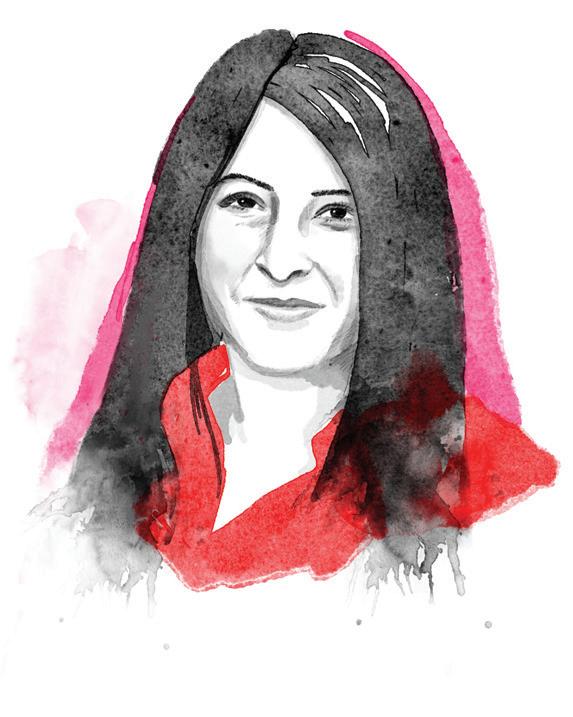
Local real estate professionals share their thoughts.
BY VERONIKA LEE CLAGHORN
Due to easing concerns about inflation and economic growth, the Federal Reserve lowered interest rates in September by 50 basis points, putting rates at between 4.75 and 5%. It was the first rate cut since March 2020. While previously hesitant to make cuts, the Fed acknowledged that high borrowing costs have made home purchases and loans more expensive, resulting in many homes remaining unsold due to limited financing options.
A reduction in rates could lead to lower mortgage benchmarks, potentially stimulating the economy. However, the Fed must exercise caution; too large a decrease could
reignite inflation. Currently, the belief is that the economy is robust enough to handle this adjustment.
Leslie Molson, a New Orleans-based principal accountant and bookkeeper, warns potential homebuyers not to get too excited by the news.
“Since the Federal Reserve doesn’t set mortgage rates, only short-term loans like credit card interest, home equity loans and lines of credit, it hasn’t and won’t have a significant impact on the housing affordability and availability crisis in Louisiana,” she said. “Mortgage rates came down right before the cuts but have since gone up a little bit. Overall, housing affordability is on par with what we saw during the housing bubble that preceded the 2007-2009 financial crisis, and it’s not good.”
Still, Benji Azar, a real estate specialist at Elifin Realty, is hopeful that the recent cut will be the first of more positive announcements.
“The cut is similar to an invitation to a party,” he said. “It’s been noticed and is creating interest and conversation in the market, but investors haven’t decided to jump in fully. There are talks of an additional cut in November, and we have the upcoming election. Many investors are waiting to see what happens for the remainder of Q4 2024, but the RSVP list looks to be growing for Q1 2025.”
But what does this mean for Louisiana?
While some are quick to point out that the rate cut is only half a point, Philip Ewbank of Keller Williams said that Louisiana residents will be affected by the cut in a positive way in the short term and a neutral way in the long term.
“Unlocking buying power by lowering rates creates economic opportunity,” he explained. “More importantly, the Fed’s promise for more cuts continues to fuel these opportunities. In the short term, it’s cheaper to borrow money. This makes credit card balances a bit less expensive (as we’ve seen a big rise in debt). Mortgage rates are dropping. We are in a buyer’s market due to insurance and high interest rates.”
Ewbank said lowering mortgage rates is the first step to making homes more affordable. In the long term, he believes more affordable homes lead to an overall improvement in the economy.
“[The interest rate drop] can heat the economy back up, which is good, but we don’t want it too hot, right?” he said. “Half an entire percentage point is a big deal as companies can begin borrowing money. It’s cheaper to make investments in capital at lower interest. This affects Louisiana as companies can expand, hire more people and begin more projects.” T


Car and truck dealerships in Louisiana deliver much more than an exciting new ride.
BY COULTER MCMAHEN
For almost all of us, purchasing a car is one of the largest investments we make in our lifetimes. We put a lot of thought into this decision, conducting extensive research on the cars that meet our needs, visiting multiple dealerships to test drive vehicles, and finally making our purchase. Louisiana’s dealers put just as much effort into ensuring Louisiana customers drive off with the car of their dreams.
This hard work from Louisiana’s dealers significantly benefits our state economy. Collectively, these dealerships provide over 38,400 jobs, with an average annual income exceeding $75,000 per employee. They contribute to a combined payroll of $1.5 billion, generating more than $325 million in state and federal income taxes.
Last year, franchised dealers generated $19.2 billion in total sales and contributed a substantial $672 million in tax revenue to Louisiana, solely from new car sales.
At the Louisiana Automobile Dealers Association (LADA), we represent Louisiana’s nearly 350 franchised new car and heavy truck dealers
COULTER MCMAHEN is president and CEO of the Louisiana Automobile Dealers Association. He may be reached at cmcmahen@lada.org.
and over 150 allied associate members across the state. LADA is dedicated to educating state leaders and the public about the economic significance of Louisiana’s auto dealerships.
Louisiana auto dealers — often family-owned through generations — are deeply rooted in the communities they serve and play pivotal roles as both business leaders and active community participants. For example, in 2023, Louisiana dealerships made contributions exceeding $18 million to charities and nonprofit organizations. Especially crucial during hurricane season, they also step up to provide essential supplies and resources to communities affected by extreme weather conditions.
We experience these economic and philanthropic benefits from our dealers thanks to Louisiana’s franchise laws, which are designed to protect consumers and uphold ethical business standards among dealerships. These laws prevent fraudulent practices, unfair competition, and undue influence and control of independent Louisiana car dealers by their manufacturers and distributive organizations.
A robust dealer franchise system ensures auto dealers compete for customers, driving prices down and customer service quality up. Through this system, customers always have reliable access to a dealer in the community when they encounter issues with their car, rather than being left waiting in a customer service phone queue.
As the leading voice for Louisiana’s robust franchise system, LADA remains committed to consumer protection and satisfaction. By upholding high standards of business conduct and ethics among its members, LADA contributes to building trust and confidence in the automobile purchasing experience for Louisiana residents, delivering economic benefits to our state.
Looking ahead, LADA continues to innovate and collaborate on initiatives that benefit both members and the broader community. An upcoming partnership with Keep Louisiana Beautiful and Lt. Gov. Billy Nungesser will launch a roadside litter prevention campaign.

At LADA, we are always evolving our strategies and initiatives to meet the challenges and opportunities of a dynamic automotive industry. By adapting to technological advancements, market trends and regulatory changes, Louisiana’s auto dealers are a proactive force, providing a vibrant automotive marketplace and a quality car shopping experience to Louisianians. T
350+
38,402
$1.5 BILLION

Family businesses are tough to run. This tool makes it easier.
BY MATT HAHNE
Small businesses (fewer than 500 employees) are hard enough to run. Add the drama and emotion of family dynamics on top of it, and things can get messy fast — even to the point where other employees begin doubting the business.
I’ve seen some very real and very uncomfortable family business moves.
For instance, give your son or daughter a job in the business that they don’t truly want and aren’t qualified for, and that child will feel demoralized quickly (imposter syndrome, stress). Plus, other employees will question your fairness and rationality.
Or maybe you give your brother a job in the business to keep peace in the family but don’t give them a job description, key roles or reporting requirements. I have news for you: Peace is the exact opposite of what this will produce.
These examples sound really bad but are incredibly common.
MATT HAHNE is a certified 3-Circle Solution Guide and Certified EOS® implementer working with local family businesses. He may be reached at (504) 250-3807 or matt.hahne@eosworldwide.com
The good news is that there is a simple tool for managing family business matters: the 3-Circle Model shown here. Created by Renato Tagiuri and John Davis at Harvard Business School (HBS) in 1978, the simplicity of this is powerful:
• Keep family in the family circle;
• Keep business in the business circle; and
• Keep ownership in the owner’s circle. Many owners are constantly thinking about family and business. The secret sauce of this model is to also focus on the ownership circle.
• Every circle has its own Rules of Engagement . Ground rules should be clear: In “family,” you have a seat and a say if you were born, married, adopted or raised here. In business, consider the EOS® language “Right Person, Right Seat.” More examples: Thanksgiving is a family event; we don’t talk business. Fair in the family circle is equal. Fair in the business circle is market rates. Fair in the ownership circle is determined by the owner’s philosophy.
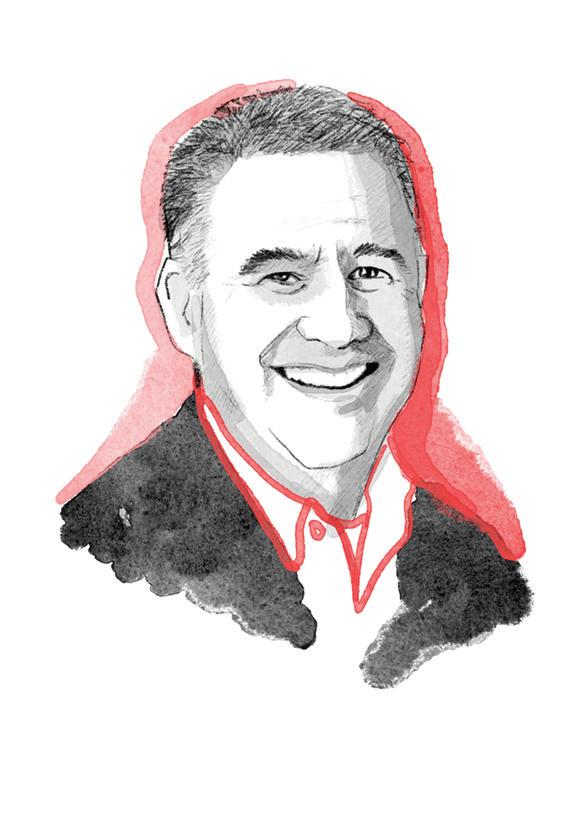
• Every circle has its own roles and responsibilities. We need a chair or leader in each circle. In the business circle that’s usually the CEO. The family circle may have a CEO, too: the chief emotional officer.
• Every circle has a goal. The goal of the family circle is harmony. The goal of the business circle is profit.
Put the 3-Circle model to use right now! Give it 10 minutes: First, draw and label the 3-Circle model on a blank page. Then, for each circle, notate:
• Rules of engagement, including what is fair
• Roles and responsibilities
• Goals
• Decisions
• Communicate with other members of the circles. Unsaid is unclear.
The 3-Circle model brings clarity and keeps the right functions, roles, goals and decisions where they are best handled for the greater good of both the family and the business.T


BY KEITH TWITCHELL
DAVID and TERESA LAWRENCE have spent decades in staffing and HR. As workforce challenges continue to dominate most industries, they share their thoughts on the biggest mistakes businesses make in hiring, the pandemic’s lasting effects on benefits and the workplace, and their tips for success — from one family business to another.
DAVID AND TERESA LAWRENCE own two businesses in the personnel industry: Delta Personnel, a local staffing company, and Delta Administrative Services, which provides HR functions. Delta Personnel was founded by David’s father in 1968. The couple took over operations in 1988, when the senior Lawrence contracted Parkinson’s disease. David then founded Delta Administrative Services in 2000.
Today, the companies share office space but maintain separate staffs, which together amount to approximately 300 employees.
The workplace has changed dramatically since COVID, and staffing is a challenge for virtually every business in every field. And being a family business creates its own dynamics.
Recently, Biz New Orleans spoke with the Lawrences about what has changed, what remains constant, and what the future holds for hiring and managing employees.
How do you operate as a family business?
TERESA LAWRENCE: It’s a collaboration between two companies that we own, Delta Personnel and Delta Administrative Services. In May 1988 we got married, and then we took over the business in the fall of ’88. So we had very little time to be a couple, much less take on responsibilities of other people’s lives that work there. Quickly we decided who was going to do what, to avoid confusion. I was the salesperson for the company, and David was the backbone of the business, everything to do with payroll and admin and operations, hiring and firing. We quickly grew from one office to four offices. Then David opened Delta Administrative Services in 2000, and both companies started to grow.
DAVID LAWRENCE: The staffing side is recruiting and placing people, and Delta Administrative Services handles HR for small- to medium-sized businesses. We do things like benefits and benefits administration, safety and risk management, and payroll and tax.
Biz: Do you have any advice for family businesses, and how to manage the benefits and challenges?
TL: Decide your roles within the companies before you have a family member come in because it’s very confusing to staff if you don’t have that definition.
Whenever David used to call a meeting, I acted as a salesperson, and he would correct me if I said something wrong, like I sold an account that we weren’t able to fulfill. And I had to take that direction, because in that position, he is the operations manager. The benefits of defining the roles are not just for you and your husband, or you and your children; defining that role is the structure that continues and sustains a company. You must have that leadership and respect each other.
DL: We found out early on that we didn’t want to bring [work] home with us. For a married couple, that’s very important so that you’re not 24/7 doing the work. You need to have a balance of home and work life.
What industries locally struggle most with staffing?
TL: Hospitality is a huge challenge. It is probably the highest turnover that you can imagine. This isn’t because of management, it’s because the grass is always greener on the other side. The staff is a very small circle and they move from one client to another client.
DL: Especially post-COVID.
TL: The second one is manufacturing and IT. Those things are in demand, but for the pool of people that we have in our community, and outside the community, that work remotely, the culture has changed. COVID was a silent war, and any culture changes after a war. Staffing now is not so much about finding, recruiting and retaining, but more can we move this whole culture back to being producers that are ambitious to get ahead in life.
DL: In addition to that, there’s not a lot of dedication to employers anymore. A job is just where you work, and if something happens, you just leave. Previously, you would never leave a job unless you had another one lined up, but now people figure they’ll just go find a job somewhere doing something else.
Are there changes in the onboarding process as result of the pandemic and remote work?
DL: Everybody adapted because you couldn’t do in-person interviews anymore, so everything became electronic. We had electronic onboarding previously, but now it has become the sole source. You go on your computer and do it online.
In Louisiana, 149,100 people were employed every week in 2021 by a staffing agency, resulting in an annual payroll of $1.1 billion.
Source: American Staffing Association
TL: [As someone who does staffing] I’ve always wanted to see and talk to people in person, see their mannerisms, see how they acted, how they carried themselves, how they dressed. See what impressions I got from them. Those are the things that I am collecting. I collect culture, not just skills.
Now, with the globalization of technology, the documentation, the onboarding, everything is electronic. The interviews are electronic. The conversations are over the phone. The client sometimes doesn’t even meet the person until they report to their office for the first time. That’s definitely a big change.


DL: They have changed drastically. They’ve been enhanced with a lot more mental anguish-type policies and making sure that there’s an employee assistance program in place. When there’s something wrong, employees have a place to get relief, to talk to a professional. A lot of benefit plans now include something that can help with all the issues that came along with COVID. So many people were trapped in their homes that it put a big burden of mental stress in the workforce and in lives in general, so the change has been to gear benefits toward the mental health side.
TL: Time off, more “me” time. We have a very nice benefits package, and it is a retaining tool. It didn’t used to be, it was more salary-driven than it was benefits-driven. If you’re an employer, your benefits package supersedes sometimes the salary of that person, because they say, “I just need this coverage, and how much is that going to be for me?”
DL: Health insurance prices have gone through the roof for all small businesses, for all businesses in general. The amount that the employee has to pay as a portion of that, because it’s a big drain on their paycheck, they need to know all that.
Another thing we heard a lot about during the pandemic was DEI, Diversity Equity and Inclusion. Is that still a big concern?
TL: Yes. I didn’t think that was a concern ever since 1988, since we’ve been in this business. As the transition started to take place, however, we already had in place a huge, diverse pool. I’m a woman-owned business, a minority-owned business. I have all the checkmarks that you want, but the culture inside the office is what needs to be important.
DL: It started internally after George Floyd.
TL: I had a challenging time understanding what was happening because I really thought the culture we had was so diverse and so well-rounded, but then we realized that we have to be a part of the conversation. We now have a DEI committee that meets quarterly, and we present to the whole staff. Everybody stops for one hour. We share things that are of concern. Sometimes there are things that you don’t know, you can’t see.
DL: We have an infrastructure now that’s built into hiring and everything that we do. Everybody discusses DEI. That’s on our internal side. There are still some people that don’t want to have to deal with it, but they’re learning that it’s part of society now. It’s not just race or gender. One of our meetings was all about someone’s son, who is autistic, and how people treat autistic people, and it was wonderful because other people opened up and talked about how their kids were like that as well. There are all kinds of diversity that everybody needs to hear about.
TL: It’s something that must be worked on. It must be part of you, it cannot be something that you pick up and then put back on the shelf. It’s something you practice. It has to be part of the everyday things that you do.
What are the biggest mistakes that businesses make with staffing and HR?
TL: Lack of communication. I think people interview and they hire, and then that’s it. They think that after they hire, that person is going to be communicative and well taken care of. No! Bring them back in the office three months later and say, “Tell me again how you see yourself here?” There is no such thing as over-communicating.
I think one of the biggest mistakes is not having quality hires, because employers Band-Aid a hire. Let’s get this person in, this person is going to do what I need to do right at this moment. You have to have vision; you have to see that person grow in that position for the next three to five years. If you hire someone for one moment in time that you need something fixed, you’re not doing yourself or that person a service. You hire people with ambition to grow in the company.
DL: There are a lot of companies that hire for skills, and they give them a few days of training and then say ‘Go, you’re on.’ You have to train constantly on all types of things. You train on culture; you train on leadership skills. I always try to train so that that person is going to move up and then train the person behind them. Your company can’t grow unless your people grow. I’ve heard pushback like, ‘What if I train that person so well that they leave?’ but the opposite is, ‘What if you don’t train that person and they stay?’
What does the future of staffing and HR look like?
TL: AI.
DL: It’s a double-edged sword. I’m more on the HR side, Teresa is more on the staffing side, but we both use it. I would say that with AI, you have to be careful who writes your algorithms. If you’re using algorithms to sort people, and getting back to DEI again, you can’t just say, ‘I want this person,’ because it may twist the algorithm to only bring in young people, or only bring in a certain background. I would be very careful on AI.
DID YOU KNOW? In 2023
13 million people found job and career opportunities through U.S. staffing agencies.
2.5 million temporary and contract employees worked for America’s staffing companies during an average week.
Source: American Staffing Association
TL: I think that AI changes so fast, technology changes so fast, that trying to keep up is a challenge. Let’s just say Ochsner uses Epic software. They can hire somebody and train them on Epic today, and then three months from now, a new upgrade happens, and a different training has to take place. The other thing to think about is, why are we not starting in fifth grade to motivate our children to have goals in their lives? Why can’t we start early? If a kid likes gaming, let’s gear them toward technology; let’s start cultivating our own workforce. I think we need to spend time coaching children. I don’t mean mentoring, I mean coaching. Coaching is giving them tools, mentoring is pushing them along. And the most important thing that people need is soft skills. That should be a class taught in schools.
DL: As much as AI and technology are becoming the norm, you need to be hiring for people. People run businesses, so when you’re hiring, make sure the person you choose is a fit for what you do and how you do it. People are always going to be the root of what’s going on in any business, and you need to hire the right people and put them in the right seat on the bus. T
This summer, the state legislature came very close to shutting down Louisiana’s THC beverage industry. But while production is still allowed, some of its biggest players say the new regulations
Edmund D. Fountain
by

by Kimberley Singletary
that gives major advantages to out-of-state markets create an uneven playing field and businesses within a $1billion-plus global industry that’s just getting started.

For centuries, not much about drinking has really changed. If you wanted to wind down with a beverage at the end of the day, or maybe cut loose a little, you had the choice of different variations of three things: beer, wine and hard alcohol.
OF COURSE, THERE HAVE BEEN A FEW DISRUPTORS to the alcohol marketplace over the past 20 years. The first was craft beer, a movement that got started in the 1960s, saw a major revival starting around the great recession that led craft breweries taking 40 of the 50 spots among U.S. breweries by 2017. Craft beer popularity continues — as of 2023, the industry accounts for 24.7% of the $117 billion U.S. beer market.
Around the time of another difficult period in history, the COVID-19 pandemic, another variation, this time in hard alcohol, was dominating the marketplace. Spurred by a renewed consumer focus on health and the novelty of a new option, hard seltzers started to really gain popularity in 2016 with the release of White Claw and Truly — alcoholic beverages with a light taste and fewer calories, carbs and sugar. Hard seltzer sales increased 130% in 2020, with almost 300 new brands launched in the U.S. from July 2020 to July 2021 — up 60% from the year before. By 2021, this relatively new category made up 10% of the total alcoholic beverage market.
Meanwhile, the realm of adult substances saw another major change with the passing of the 2018 farm bill, which legalized the sale of hemp and hemp-derived products across the country. In 2018, 33 states had legalized marijuana to some degree and consumer demand for the drug for both for medical and recreational use was continuing to grow.
Hemp and marijuana are both cannabis plants; the distinction is only a legal one that defines hemp as cannabis that contains less THC (0.3% or less). THC — a chemical compound in cannabis responsible for creating a “high” — can still be derived from hemp.
Four years after the doors opened for hemp, with the industry booming across the country, the Louisiana Legislature passed a bill in 2022 that allowed the manufacturing and sale of hemp products, stating that “the total THC in a product shall not exceed eight milligrams per serving.” That amount was falsely thought to not be able to produce a high. The bill also didn’t limit the number of servings a product (like a bag of gummies, or even a canned beverage) could contain.
Since the bill’s passage, approximately 2,000 hemp-related businesses have popped up across the state, including BakPak, the brand name of hemp-related products created by another company called Louisiana Hemp Extractors, which launched in 2019 in Arnaudville, Louisiana. Both are owned by Paige Melancon, a native of nearby Leonville, Louisiana. A well-known figure in the


burgeoning industry, Melancon recently concluded his term as president of the Hemp Association of Louisiana and now serves on its board of directors.
“We make hundreds of products for ourselves and white label for other people,” said Melancon of his companies, “and we do everything in-house, from extract the oil to make the water soluble for the drinks.”
“The drinks” Melancon refers to are THC-infused beverages — the latest disruptor of the adult beverage industry, and the first not to include alcohol. The beverages have essentially built off the popularity of hard seltzers but swapped the alcohol for THC.
The beverages have multiple selling points that appeal to consumers. The first lies in what they lack.
Concern over the health effects of alcohol consumption have grown in recent years, especially among younger consumers. In fact, according to the latest Gallup data, only 62% of adults under 35 say they drink, down from 72% two decades ago. Unsurprisingly, alcohol companies have been feeling the hit. U.S. beer production and imports were down 5% in 2023.
HEMP VS. MARIJUANA… WHAT’S THE DIFFERENCE?
Hemp and marijuana are both names for the same species of plant. The differentiation was created on the legal side to identify how much THC a plant contains. To be called hemp, a cannabis plant must have 0.3% or less THC by dry weight.
“There are so many reasons people don’t want to, or can’t drink,” noted Marie La France, one of four founders of Louie Louie, a New Orleans-based company that launched its first THC-infused beverages in 2023. “Maybe you’re a cancer survivor, maybe you’re a mom that can’t afford to be hungover the next day, or maybe you just want something different once in a while.”
The movement toward marijuana and away from alcohol has grown so popular a new term has popped up for it — Cali (or California) sober.
Marijuana acceptance and popularity continues to grow. It is now legal for recreational use in 24 states, and 38 have legalized it for medicinal use. This past spring, a study reported that more Americans are using marijuana on a daily basis than alcohol.
Compared to alcoholic options, cannabis beverages also tend to have less calories and less sugar and promise a faster-acting high (typically 10-15 minutes) than smoking, vaping or taking an edible, and one that doesn’t last as long. In the first quarter of 2024, cannabis data company BDSA tracked sales of THC infused beverages in just 15 states — together they totaled about $50 million, and that was not including many states that can now sell hemp-derived THC beverages like Louisiana.
LOUISIANA’S LEADER Among the handful of Louisiana companies making THC drinks, Crescent Canna is the largest, and the company’s website goes a step further, touting its Crescent 9 THC seltzer as “the fastest-growing cannabis seltzer in the U.S.”
Crescent Canna launched in 2019 as a manufacturer of CBD topicals and tinctures. (CBD is short for cannabidiol, a non-addictive chemical in cannabis that doesn’t create a high and may have benefits

for anxiety, insomnia, chronic pain and addiction). The company is run by Joe Gerrity, a native Californian who moved to New Orleans to attend Tulane University and never left. A real estate professional, Gerrity still owns a real estate brokerage, a property management company and an investing company.
“We saw the potential in selling THC products that were high quality and significantly cheaper than what you could find both on the black market and from recreational marijuana states and medicinal marijuana states,” he said. “One of my partners is a liquor distributor in Tennessee, and he and I had discussed potentially getting into the beverage industry. Ultimately, we decided to pivot in the summer of 2022 toward manufacturing beverages, as opposed to manufacturing our own edible products.”
Gerrity expanded the manufacturing facility he had in North Carolina, which is now about 9,000 square feet.
“We effectively built a small brewery,” he said. “We learned all about the ins and outs of manufacturing a beverage product, logistical challenges, the changes in manufacturing, and we launched our first product on the beverage side in, I believe, February of 2023.”
Success came fast.
“Very quickly we became the top-selling THC product in this market, and also one of the top-selling products in Nashville, which was the second place that we launched,” Gerrity said. “We then decided to focus heavily on New Orleans. Because of the regulated environment here, it was very specifically legal, and we wanted to spend money in a place where the laws would not be changing drastically.”
Gerrity said his product was welcomed by other local companies like Rouses and Martin’s Wine and Spirits.
“There was a period where we were out selling every other beverage [Rouses] carried,” he said. “We’re selling close to 400 cases a month at some individual grocery stores, which is a lot for a canned beverage product. We found a lot of success in the local market, and we’ve parlayed that success into establishing relationships around the country with other large distributors and grocery chains.
Headquartered out of an office on Magazine Street that is home to about a dozen staff, Crescent Canna also has a team of five at its facility in North Carolina and about a dozen sales reps around the country. The company currently sells in 15 states, as well as direct-to-consumers online.
“We manufacture about 1 million cans at a time, every other month, with revenue close to $2 million a month,” he said. “We’ve seen 350% yearover-year growth.”
The

Did You Know?
Less than a year into production, Urban South’s THC drinks already account for 10% of the brewery’s income

ABREWERY DIVERSIFIES Since opening in 2016, Urban South had established itself as a popular local craft brewery always looking to try something new. In addition to a 40,000-square-foot facility on Tchoupitoulas Street that is home to a tasting room and all of the company’s manufacturing and distribution operations, (along with about 50 employees), Urban South also operates a burger truck in New Orleans and a hospitality group and taco truck in Pensacola, Florida.
Following about six months of research, in December 2023, the brewery launched its first THC-infused beverage, Driftee, a seltzer with no calories, carbs or sugar.
“We saw some trends like hard seltzers and RTD (ready to drink) cocktails come online, and we didn’t really get in early enough to be an established player,”
According to the National Institute on Drug Abuse, “Chronic, heavy — every day or almost — use of cannabis products with THC is associated with developing cannabis use disorder, a type of substance use disorder. Studies have estimated that 22% to 30% of people who use cannabis have the disorder. The strongest predictor of cannabis use disorder is how often someone uses it, but other factors, like a family history of drug use and how long a person has been using cannabis, can also play a role.”

explained Jacob Landry, founder and president of Urban South. “Since this was an entirely new category, we loved the idea of jumping in relatively early and really trying to establish ourselves as one of the early movers. And then on top of that, craft beer sales have kind of plateaued and are a bit stagnant, so we also thought, just as a company, we needed to hedge our bets and diversify a little bit.”
Landry said the move has paid off, and fast. Offered in three different flavors, Driftee is distributed statewide through Wines Unlimited, as well as throughout Alabama. The company just added distribution in Hattiesburg and Jackson, Mississippi, in September.
Following the quick success of Driftee, which Landry said he’s pretty sure is the second-best selling THC beverage in Louisiana, Urban South just released its second brand, Stratus.
“Stratus is our flavor-forward brand,” said Landry. “The flavor we have started with is peaches and cream. Stratus does have sugar; it also has fruit puree and flavorings that make it a more robust flavor experience.”
Less than a year into production, Urban South’s THC drinks already account for 10% of the brewery’s income, and Landry said the manufacturing process is a lot simpler than with beer.
“Because beer needs fermentation time, the process can take anywhere from two to four weeks,” he said. “But with these beverages we’re taking water, we’re carbonating it, adding flavoring and adding THC isolate, so we can do a batch within about 24 hours.”
AFRIENDS AND FAMILY AFFAIR
Louie Louie is another top contender in Louisiana’s THC-infused beverage marketplace. The company was initiated by Eric Becker, a lawyer who has spent years working in the world of cannabis regulations and compliance. In the summer of 2022, Becker witnessed what happened when Minnesota changed some its laws that allowed local breweries to start making low-dose THC beverages.
“It gave me the idea that we could start doing something like that here,” he said.
Becker and his wife, Michelle, who has a background in large scale food operations, decided to reach out to another married couple they had known for years — Ken Jackson and Marie La France. Jackson is a lifelong fine food connoisseur and restaurateur who was one of the founding partners of the acclaimed restaurant Herbsaint. He had a passion for ingredients, sourcing and recipe de-
velopment and had been crafting cocktail recipes for 25 years. La France is a publishing and digital marketing professional whose background includes seven years at Vogue.
Together, the two couples possessed all the necessary business knowledge to take on this new venture — now they just needed to make it happen.
While Jackson turned the couple’s kitchen into something resembling a chemistry lab, the others went to work securing ingredients and developing a marketing plan.
“Our goal from the beginning was to be all about New Orleans,” explained La France. “With Louie Louie we are selling NOLA to the world.”
The first flavor, satsuma, was created with real fruit, herbs and organic cane sugar, a trend the company continued with the launch of blackberry lemon — far and away the most successful to date — and their third offering, ginger cucumber.
It’s no accident that Louie Louie’s flavors create a Carnival color palette of purple, green and gold; every part of the marketing is New Orleans-centered. The company’s name was inspired by the popular song, but it’s also a nod to Louis Armstrong (who Becker noted was a big cannabis advocate). The font used for the word “Seltzer” on the cans was inspired from an old Ramos gin fizz glass from The Sazerac Bar inside The Roosevelt New Orleans hotel.
Launched not long after Carnival 2023, Louie Louie currently has 250 accounts in Louisiana and close to 100 in Texas.
“We just launched into Alabama and the Florida Panhandle,” said Becker. “We’re growing at such a clip right now that the challenge is keeping up with demand.”
A small operation by design, the company manufactures its product using a few tanks inside Port Orleans Brewery. Louie Louie is currently taking orders from 30 states direct from its website and fulfilling them through two warehouses — one on the Westbank and one in Elmwood. In addition to the four founders, the company has three full-time employees and is currently looking to add three or four part-time representatives in key markets.
Flavor, said Becker, remains the focus.
“We’re the only ones really coming at this from a behind-the-bar standpoint,” he said. “The way we approach our recipes is that if it comes from New Orleans, it better taste good.”
LEGAL ISSUES ARISE Business
was booming in this new marketplace when a new threat suddenly appeared. On March 1 of this year, Sen. Thomas Pressly (R-Shreveport) introduced a bill (SB237), that would have effectively banned all THC consumables.
The industry quickly mobilized.
“This year, the Louisiana Hemp Association was actually asking for more regulations on the industry because regulations actually give it legitimacy,” explained Becker. “A lack of regulation can keep some
of the bigger, more established chain grocery stores or liquor stores from getting into the category. And then suddenly instead, we have this bill to ban it all.”
As everyone with a stake in the market headed to Baton Rouge, Landry joined as a fighter for not one, but two industries.
“I’m president of the Louisiana Craft Brewers Guild, so I was also coming from the perspective of making sure the breweries were still allowed to be manufacturers of the product,” he said, “just trying to preserve as much of what we had as possible.”
Becker said local bars and restaurants also faced a potential loss with the passage of a ban.
“Our restaurant industries are embattled enough. The thought of taking away another potential line of profit just seems absurd to me,” he said, noting that restaurant support for the beverages has even extended to the Napoleon House, which created a new cocktail offering at its establishment — the Louie Louie Pimm’s Cup.
“We have the opportunity for people to come here and try unique New Orleans beverages and then go back home and buy them,” added La France. “That just extends the NOLA experience.”
The burgeoning industry mobilized fast, firing off what Becker described as “thousands of calls and emails to legislators.”
“We were told we were dead in the water this last legislative session,” said Landry. “Some of the richest people and most powerful people in this state, including the governor, the senate president and multiple billionaires, especially from the medical marijuana industry, all wanted this product gone, and we somehow, some way, were able to survive. And that is thanks largely to our lobbying presence, as well as the grassroots movement that we were able to harness to really make a lot of legislators aware that these products are wildly popular, and that people do not want their freedoms taken away just to benefit big business.”
Three months later, on June 3, the Louisiana legislature granted final approval to House Bill 952 (now known as Act. 752). The greatly altered leg-
fonts and flavors, Louie Louie is focused on “selling NOLA to the world.”
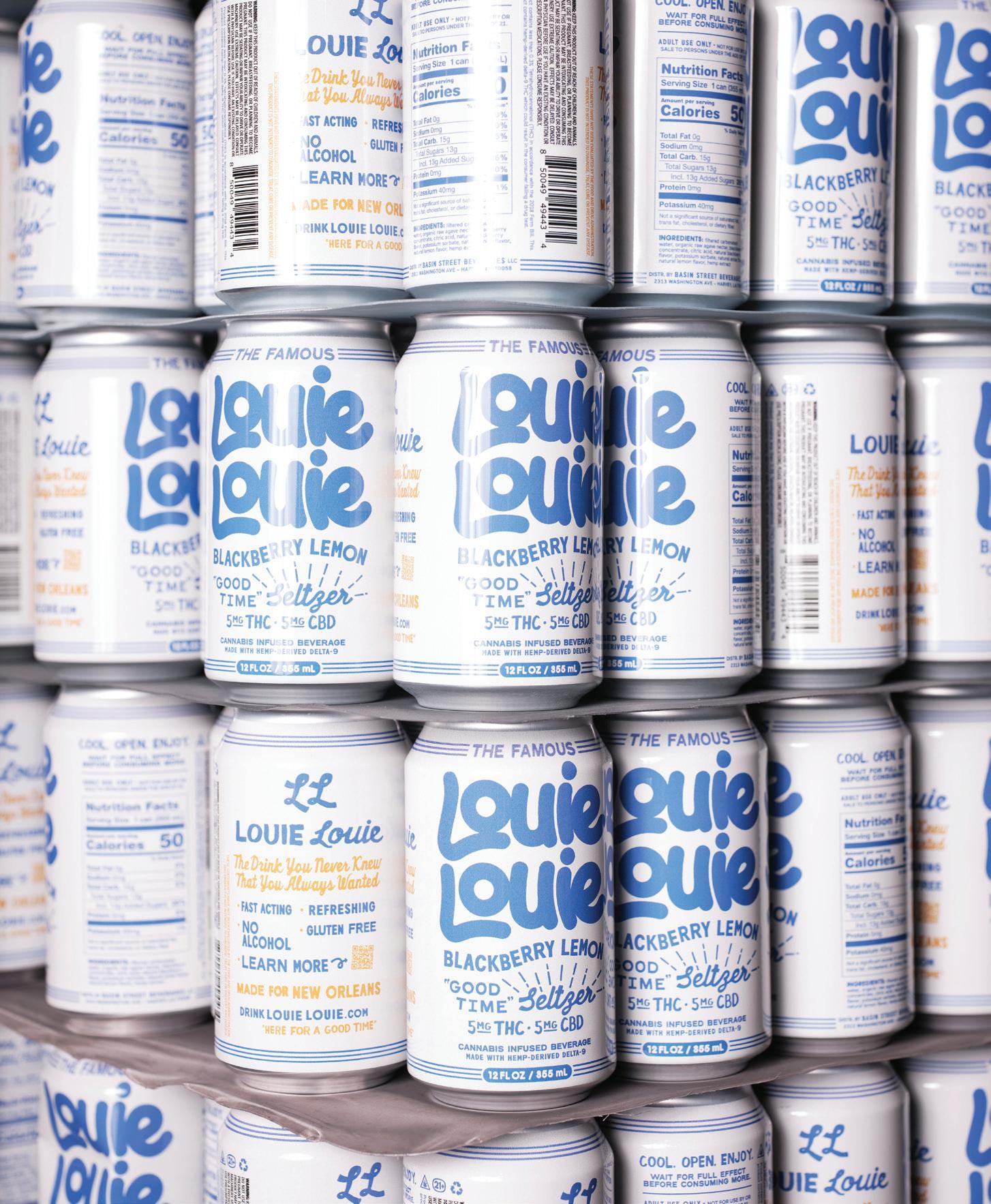
islation allowed restaurants and bars to continue selling the beverages if they already had secured permits, as well as any new establishments that became permitted by June 17.
While previously, the beverages had been sold at gas stations, the bill demands the drinks be put behind the counter for now and dictates they must be sold off by Jan. 1, 2025, when gas station sales will no longer be permitted.
The amount of THC allowed per beverage has also changed from 8 milligrams to 5 milligrams per serving, clearly spelling out that a can must not hold more than one serving. Cans must also not measure less than 12 ounces and are limited to being sold in packs of four. There is, however, no limit on the number of packs a person can buy.

MOVING FORWARD IN A NEW ERA
The new regulations quickly altered Louisiana’s marketplace. As Becker hnoted, adding regulation made other players feel more secure in moving to the state.
“We were already seeing competing brands coming in from other states,” he said, “but as soon as this bill passed, we saw five brands launch here within just a few weeks.”
And while competition is increasing, the number and variety of locations that can sell these products has severely dropped, with no room for growth.
There’s also the fact that the products themselves are restricted by dosage and pack size, restrictions that can cause consumers to opt instead to just order what they want online from out-ofstate companies and have it shipped.
According to Headset Data, in 2022, “The most popular [THC-infused] beverage dosage in the U.S. has been 10mg [twice what is now allowed by Louisiana companies], capturing 39% of the market.”
Beverages with dosages of 100mg made up 22% of sales in the first 10 months of 2022. Those with 6mg or less made up 22% of the marketplace.
Crescent Canna’s newest offering, created in collaboration with local celebrity Big Freedia, is Wobble, a sparkling THC energy drink with 10 milligrams of THC and 100 milligrams of caffeine. Obviously aimed at the out-of-state market, the company is offering a $5 flat-rate shipping and free shipping on orders over $99.
“It definitely caps the kind of growth that we can see here,” noted Landry of the new laws. “So that’s unfortunate, because the beer laws in Louisiana are some of the worst in the country. It just reinforces that this is a very difficult place to do business.”
For all Louisiana companies, any chance at growth can only be found outside of the state.
“The opportunity now is to establish ourselves as a regional, if not national brand,” said Landry. Urban South is looking at distribution in South Mississippi, Arkansas and Georgia. “Alabama doesn’t currently have any real regulations on the books. Mississippi doesn’t either, so there’s definitely a lot more flexibility than in Louisiana in terms of the products that can be made and the formats.”
Melancon — who said he’s making moves into Texas and Florida with his hemp-derived products — said it drives him crazy when he hears people saying the hemp industry is not regulated.
“Louisiana is one of the most heavily regulated states in the United States,” he said. “We’re regulated by the Louisiana Department of Health, which follows the FDA guidelines for safe manufacturing processes, and those are the same guidelines that the medical marijuana guys follow, which are the same guidelines that are put forward by the pharmaceutical board.”
While he anticipates at 70% drop in the market share of his products due to the new regulations, Melancon is hoping to expand his beverage line, noting that “I think the drink industry is a way to
CBD (CANNABIDIOL) ingredient in cannabis derived from the hemp plant. Does not produce a high and is not addictive. Some data have shown it may have benefits for anxiety, insomnia, chronic pain and addiction.
“We’re the only ones really coming at this from a behind-the-bar standpoint.”
- Louie LouieCo-owner Eric Becker

really touch a lot of consumers and shut down the fear mongers around hemp products.”
Gerrity said he’s constantly looking at new marketplaces, while keeping an eye on national and state politics.
“In California, the governor recently just issued an emergency public health ruling which completely banned all hemp products in the state,” he said. “That is pending a legal challenge, of course, and that’s being done to, ironically, protect the marijuana industry, because it was doing very, very well for a long time, but in recent years they have seen significant drops, and they are pointing the finger at hemp products as the reason why… In Missouri, the governor attempted to do the same, but it was overruled.”
Noting that “the marijuana industry is probably the biggest threat to us,” he added that, “some of the biggest people in the alcohol industry want in, they want to carry us. They want to be part of the growth of this industry, to support it instead of fight it.”
Meanwhile, on the national level, in May, Rep. Mary Miller (R-Ill.) introduced an amendment to the farm bill that would change the definition of hemp to only include “naturally, occurring, naturally derived, and non-intoxicating cannabinoids,” which was countered in September by Sen. Ron Wyden (D-Or.) with a bill that would make all hemp products legal nationwide, while still allowing states to make their own regulations and restrictions on their sale.
“We’re in a race to establish ourselves and lower our prices to the point where we can compete with anybody anywhere,” said Gerrity, “while also fending off attacks from legal marijuana markets and the general marijuana industry, which prefers a much more regulated and smaller group of people competing for consumer revenue.”
La France said Louie Louie will never give up on Louisiana, or the potential that exists here, but, at least in the current climate, they must do what’s best for business.
“We have the opportunity to be leaders in this industry,” said La France of the statewide marketplace. “Not many new industries have started in Louisiana, and we have a national reputation already that I think means quite a lot. We want this to be a Louisiana success story.
CANNABINOIDS ARE THE NAME FOR THE MORE THAN 100 DIFFERENT CHEMICALS FOUND IN CANNABIS. THESE INCLUDE…
CBG (CANNABIGEROL) A cannabinoid that, in its acid form, is the producer of other cannabinoids such as THC and CBD. Like CBD, it does not produce a high and can act as a buffer against psychoactive effects when taken
with THC. According to WebMD, “There is interest in using cannabigerol for abnormal levels of cholesterol or blood fats, Huntington disease, inflammatory bowel disease (IBD) and to stimulate appetite.”
THC (TETRAHYDROCANNABINOL) The most abundant cannabinoid, THC is responsible for the cannabis “high,” which can include changes in mood, thoughts and perceptions of reality.
DELTA-9 AND DELTA-8 two forms of THC found in the sativa plant. Delta-9 is the most well-known and abundant form of THC. Delta-8 is much less present in the plant and is generally less potent.


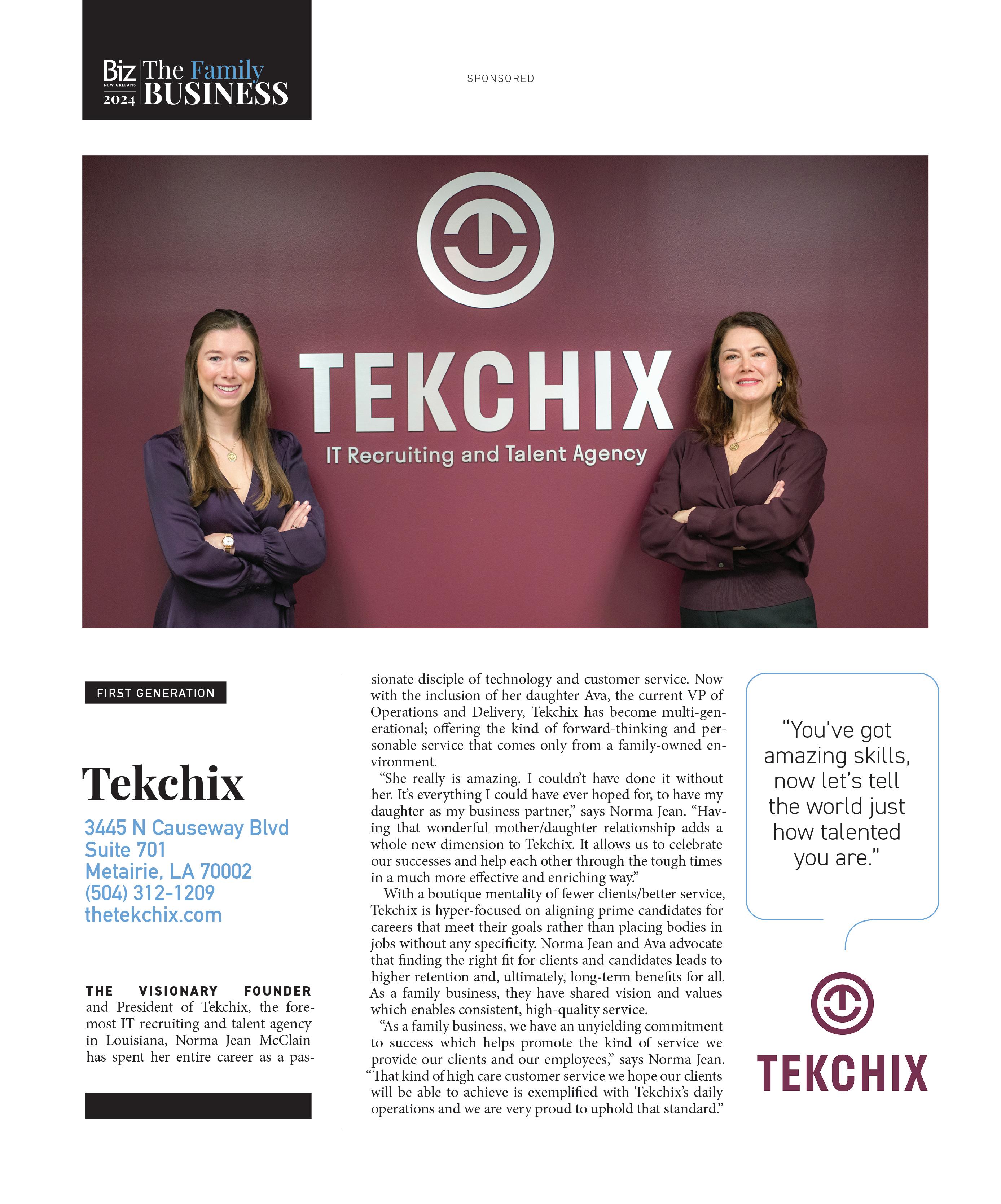
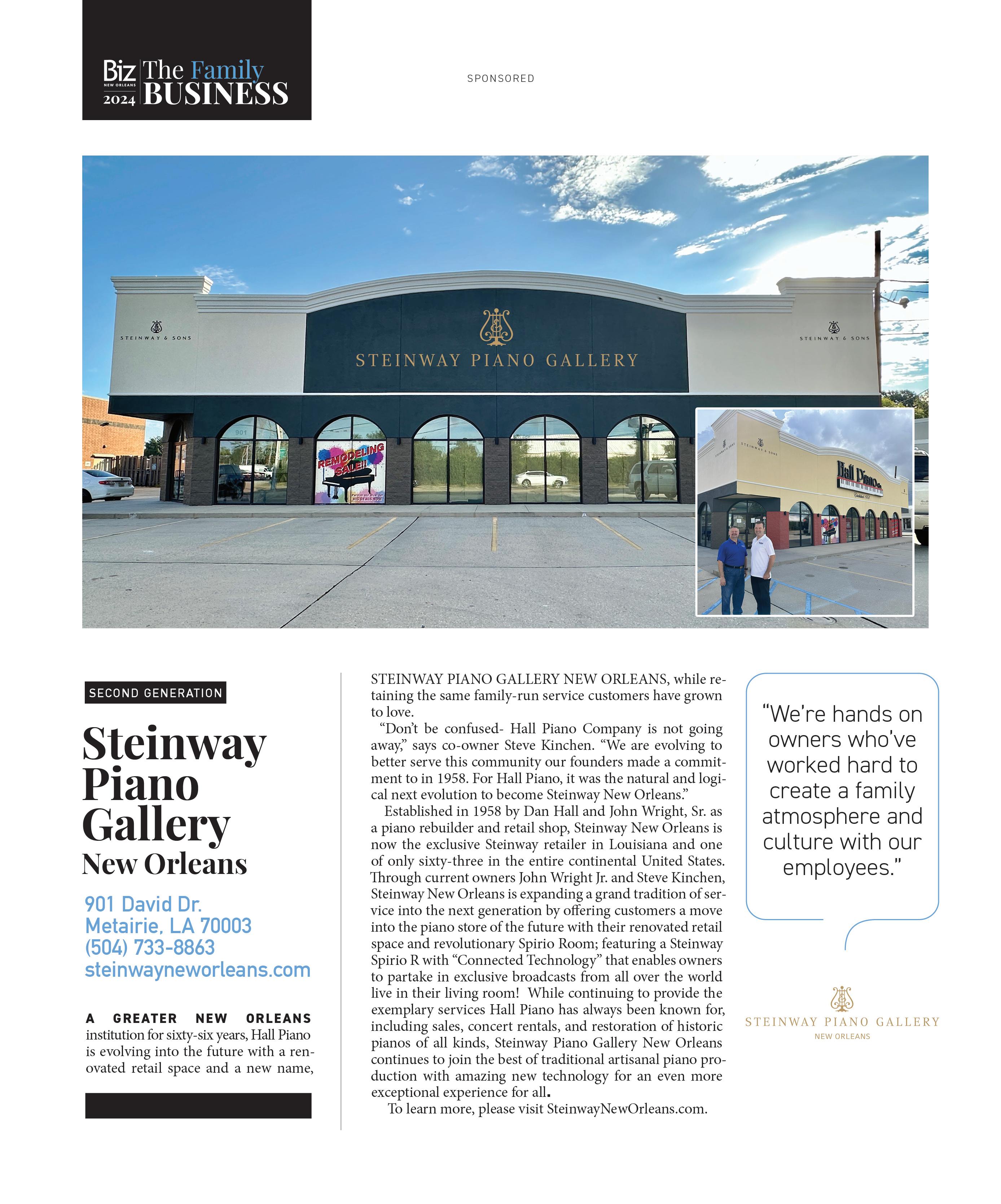







58 WHY DIDN’T I THINK OF THAT?
“The Creole Sausage Queen” has a new venture designed to complement her family’s century-old success story.
62
Young’s Dry Cleaning’s thirdgeneration owners have weathered the times by staying nimble and diversifying their offerings.
64
NEW ORLEANS 500
Natalie Barranco, Co-Founder of Prime Business Advisory Solutions
Architecture and design firm Studio West served as their own client in transforming a historic building into their fresh, modern offices.
STUDIO WEST DESIGN & ARCHITECTURE, LLC
2340 Dauphine St. // New Orleans // studio.west.design facebook.com/studio.west.design linkedin.com/company/studio-west-design-and-architecture
Architecture and design firm Studio West served as their own client in transforming a historic building into their fresh, modern offices.
BY MISTY MILIOTO
PHOTOS BY LAURA STEFFAN
Jennie Cannon West, principal and founder of Studio West, started the architecture and design firm in 2018. She and Jason Richards, practicing architect and principal at Studio West, now provide full architectural and interior design services, including styling and procurement.
“We work on both historic preservation and new construction, [and both] ground-up and renovations,” said West.
When she first opened the practice in a shotgun house in the Bywater, West knew she would eventually want to grow the firm. When that time came, she was happy to find a building in the Faubourg Marigny in 2020.
“We wanted to purchase and renovate a historic commercial building with character,” she said. “It was important for us to be our own client for the space and feel the excitement, stress and joy that comes with envisioning and constructing a new office. The building was a former pharmacy constructed in 1910 with a corner entrance.”
Though a former pharmacy, the building had most recently served as a real estate office for 30 years. West said it required some reframing of the exterior walls and sills that had deteriorated over time. Meanwhile, the interior had been sliced up into offices and various unusual configurations.
About half of the building’s pressed-metal ceiling tiles were damaged and had to be shipped to a company in Missouri that refabricated them.

“
It was important for us to be our own client for the space and feel the excitement, stress and joy that comes with envisioning and constructing a new office..




Flexibility was key in designing Studio West’s new space, which features a neutral color palette with pops of color, along with a wide variety of different work spaces and plenty of storage.
West hired John Segura and Jacques Magne, partners at Arch Builders, to reconfigure the office space back to its original floor plan. While West and Richards developed the concept and design of the space, Arch Builders helped determine the feasibility of structural aspects to achieve the intended design.
In addition to reconfiguring the conference and breakroom areas, the team repaired, restored and replaced the main office space’s historic metal ceiling, wood-paneled walls and tile flooring.
“About half of the historic pressed-metal ceiling tiles were damaged or rusted, and [they] required replacement,” said West. “After extensive research, we located a company in Missouri that not only re-fabricates these panels, but had a handful of the field panels in stock. We carefully removed and shipped each of the panel
types, including the curved cornices. The fabricator made forms out of them and shipped us replacement pieces, all within a few weeks’ time.”

After eight months of renovations (interrupted briefly by Hurricane Ida), the building was ready for interior design work to begin. The main goal was to create a day-lit workshop vibe that encourages collaboration.
The new main studio space features seating for the design staff, a private conference room, a library that houses support staff, a materials library and open meeting room, and a breakroom that overlooks the adjacent exterior garden. Studio West also designed custom oak and maple millwork — with a mix of closed and open storage, and lots of long work surfaces — to accommodate an expanding material library, brick samples and millwork mockups.
“We collaborated with Phil Hull, who did an amazing job creating clean, minimal interventions in the historic space,” said West.
As architects and interior designers, it was important for West and Richards to emphasize their design services in-house and to create the type of space that they design for clients.
“The space is set up for designers to work together at smaller workstations in a benching style,” said West. “We share resources and have larger shared tables for drawing sets and materials. Both of our meeting rooms are equipped
with cameras and videoconferencing technology to facilitate remote collaboration with our clients and consultants. [We also have] pin-up boards made of Homasote (wall board made from recycled paper) that allows us to pin work on the walls for design reviews and client [presentations].”
West and Richards also curated artwork from local artists, friends and collaborators to include in the space.
“A couple of favorites include a multi-panel collage collaboration from Jason’s time in architecture school,” said West, “along with paintings by Mac Ball, a mixed-media piece from Babette Beaullieu, titled Remodeling: Bringing Something Back to Life, Julie Dermansky’s haunting photographs and a pair of linoleum block prints from Gianna Morelli.”
Flexibility was key for the space.
“We selected a neutral color palette with a few accent colors,” said West, “which allows
the space to transform or flex for various client presentations to a variety of project types, including hospitality, education, civic, cultural and residential.”
The duo chose comfortable furniture from MillerKnoll, Muuto, Carl Hansen & Son, and Hay (sourced through AOS Interior Environments). They also collaborated with landscape architectural firm Spackman Mossop Michaels on the exterior courtyard.
“Whether it’s lunch or a sketch session, the lush garden courtyard is a perfect space to retreat and recharge,” West noted.
Studio West moved into the redesigned office space in March 2022 with four employees and six desks. They now have 12 employees and plenty of space to grow.
“We’re a young and ambitious firm,” said West. “We’re also proud to be a majority woman-owned business and home to a number of women architects, designers and staff.” T

“The Creole Sausage Queen” has a new venture designed to complement her family’s century-old success story.
BY ASHLEY MCLELLAN
PHOTOS BY EDMUND D. FOUNTAIN
For many New Orleans festivalgoers, the name “Vaucresson” is synonymous with annual favorites like hot sausage po-boys, jerk chicken sausage po-boys, crawfish sausage po-boys and more. Vaucresson’s Sausage Company has been a part of the New Orleans Jazz and Heritage Festival from the very beginning, continuing a family legacy from their Seventh Ward-based business that began more than 120 years ago.
Continuing the company’s success with another generation of culinary know-how, Julie Vaucresson (co-owner of Vaucresson Sausage, a.k.a. “The Creole Sausage Queen”) burst onto the scene in


Julie Vaucresson (co-wner of Vaucresson Sausage, a.k.a. “The Creole Sausage Queen” just won the National Urban League’s Small Business Matters Pitch Competition with her Creole Made Easy brand of condiments.

2022 with a new company called Creole Made Easy, which has already racked an impressive win at this year’s National Urban League’s Small Business Matters Pitch Competition.
“It was surreal,” Vaucresson said of the win. “I was well prepared and ready to go with my five-minute pitch, and then boom! I got a text requesting me to come to the ballroom where the competition was scheduled to take place. About 15 minutes before it started, I was told there was a change of plans, we would only have two minutes to pitch and three minutes for questions.”
With all her preparation now out the window, Vaucresson decided to just speak from the heart.
“I told my story, detailing my passion, and everyone responded positively,” she said. “I felt good about what I presented, and no matter how the judges voted, I felt like I was a winner.”
Creole Made Easy sells a variety of small batch mustards and condiments, in what Vaucresson said is a natural progression from the tradition of her family’s sausage business.
“It was after the 2019 festival season that I decided to start a condiment line,” she said. “We spend a large portion of our festival budget on condiments, especially mustard. Because what goes with sausage? Mustard, of course! So, I decided we should do our own line that would be perfectly paired with our sausages but would be standalone products as well.”

The brand currently has seven flavors, with additional flavor development in the works. Prices range from $7.50 to $10 per jar.
“Growing up, my grandmother always talked about ‘go withs’ foods that you eat together because it’s a natural fit. I like to think my condiments are go withs; they go with and enhance any food,” said Vaucresson. “I have three products that are the bestsellers — Creole Mustard, Creole Green Onion Sauce, and Mango Mustard Sauce. Our staff calls the Creole Green Onion Sauce “the gateway” because if you think you don’t like mustard, trying this will lead you to try more.”
Creole Made Easy products are currently sold online (IamJulieV.com) and at the company’s headquarters, inside Vaucresson’s Creole Café (1800 St. Bernard Avenue) in the Seventh Ward.
“I am approved for distribution in local grocery stores,” noted Vaucresson, “so look for me soon in area retailers.”
Just like Vaucresson’s Sausage Company, Creole Made Easy is very much a family affair.
“I currently have two employees, my daughter and myself,” she said. “My daughter said that when she finishes college, she would love to work for me, which is what it’s all about for me. The absolute best part of starting this peripheral brand has been our children’s reactions. The things that we are doing now have invigorated our kids to want to be a part of the business and continue it.”
Vaucresson continues to develop new flavors and products with an eye toward the culinary market outside of New Orleans.
“I have a cookbook, ‘Creole Made Easy with
The Vaucresson Family began selling sausages more than 120 years ago in the Seventh Ward. Julie Vaucresson’s new company is housed within Vaucresson’s Creole Cafe at 1800 St. Bernard Avenue.
the Creole Sausage Queen,’ [which came out] mid-September of this year, so I will be heavily promoting it,” she noted. “I’m also looking into co-packs so that I can position myself for national distribution. To be honest, I am so excited about everything that is happening with my company, and I can’t wait to see what the future holds.” T

According to a report by the Specialty Food Association Trendsetter Panel from October 2023, the specialty condiments market is growing fast. The global condiments market is projected to grow from $USD 89.75 billion in 2023 to USD $135.60 billion by 2030. North America dominated the condiments market with a market share of 32.71% in 2022.”
The site notes inflationary pressures contributing to the rise in home cooking that feels more special, noting the popularity of “restaurantstyle flavorful indulgences” like charcuterie boards, and the “increasing demand for elevated, artisanal food displays at gatherings, whether casual or upscale.”
Dating back to 1899, Vaucresson’s Sausage Company is owned and operated by Julie and Vance Vaucresson.
Young’s Dry Cleaning’s third-generation owners have weathered the times by staying nimble and diversifying their offerings.
BY KEITH TWITCHELL
We mostly pull our customers from within about a mile away,” said Dale Velez, co-owner with his brother Don, of Young’s Dry Cleaning, a more-than-eight decades-old family business with locations in Uptown New Orleans and Lakeview. “Nobody’s going to drive to Kenner to drop off their clothes, especially when they’re going to pass 20 dry cleaners on the way.”
Young’s was founded by the Velezes’s grandfather in Gentilly in 1940. Both brothers began working in the shop when they turned 15.
“I never wanted to be in the business,” said Dale Velez, “but every time I wanted to quit, my father would give me a raise. After a while, it was my full-time job.”
Don Velez took to it more naturally.
“I started in high school, when my dad, my grandparents and my uncles were all working in the business,” he recalled. “I got to be part of the family, working together to keep the store alive.”
After two years at UNO — during which he continued working at Young’s, Don said he “realized they weren’t teaching me anything about this business, so I went to work full-time.”
The brothers purchased the business from their father in the 1990s and began expanding.

By the time Hurricane Katrina hit, they had seven locations and had just bought space for a new cleaning plant.
When a single facility flooded in the storm, they decided to consolidate — opening their Uptown store at 6223 South Claiborne in 2006 and the Lakeview location at 905 Harrison Avenue in 2007.
In order to keep loyal customers who had been served by the closed locations, they began offering free pick-up and delivery service across the entire south shore area. This expansion was an instant success that just got more popular.
“It was the touchless way of doing business,” noted Don Velez, who as plant manager oversees the cleaning processes. “COVID really made those routes take off.”
Young’s also reaches customers through lockers located in residential and commercial complexes around their service area. Customers use an app to notify the store when they place items in the lockers and are notified in turn when their cleaning has been processed and returned.
Young’s provides dry cleaning, washing and pressing for all types of clothing. Additional
services include carpet and drapery cleaning, as well as tableware and linens, needlepoints and other family heirlooms. They also offer wedding gown cleaning and preservation and alterations.
As a company that took a big hit from a natural disaster, Young’s offers its own disaster restoration services, repairing and restoring everything from bedding and footwear to electronics and data.
Young’s has a staff of 34 people across its operations, but staffing is one of the biggest challenges they face, as well as increased supply costs.
“No one comes in ready to do these jobs,” said Don Velez. “It takes a lot of training to get them up to speed, and then you have to try to retain them.”
To address these challenges, the company has had to increase its efficiency.
“We are now fully automated,” said Dale Velez, who noted that despite all the growth and technological upgrades, service remains the biggest focus.
“If a customer’s not happy, it’s personal to us, and we want to make it right,” added Don Velez. “We want customers to be part of the Young’s family.” T

For the past several years, I have enjoyed visiting different waterfallsGeorgia, North Carolina, Tennessee, New York and Niagara Falls.

Barranco started her company with her husband, John, and another husband/wife duo, Ralph Litolff Jr. and Karen Litolff. Prime Business Advisory Solutions provides business consulting services, outsourced accounting, and operational and strategic business planning to companies across the metro area. Barranco has more than 20 years of experience in retail, tourism, construction, education, public health, public accounting and transportation. T

